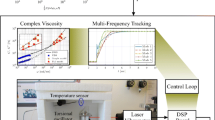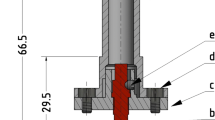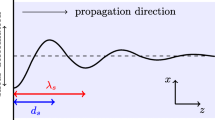Summary
In recent years, a growing interest has been shown in oscillatory shear testing when applied to Rheology. This paper describes a method of measurement based on correlation techniques, which when used in conjunction with aWeissenberg Rheogoniometer, provides direct digital readout of the specimen characteristics.
The Solartron JM 1600 Digital Frequency Response Analyser and JX 1606 Mechanical Reference Synchroniser form the basis of the system.
A signal is taken from the transducer on the lower platen of the rheogoniometer and fed to the mechanical reference synchroniser. The mechanical Reference Synchroniser provides digital information relating to the frequency and phase of the oscillatory motion. This information is fed to the JM 1600 Digital Transfer Function Analyser and forms a reference signal for the correlator. A second signal is taken from the transducer on the upper platen of the Rheogoniometer, and the JM 1600 then correlates upper against lower platens. The signals so correlated, can be representative of whatever parameters the transducers provide.
The gain and phase of the output with respect to the input, are displayed in cartesian, polar or log polar co-ordinates. The instrument also provides outputs in both digital and analogue form, for direct on line recording of the results. The frequency spectrum covered is from 10−5 c/s to 160 c/s, and the instrument is fully programmable for on line routine sampling of rheological specimens.
Zusammenfassung
In den vergangenen Jahren hat sich ein wachsendes Interesse an der Schwingungs-Scheruntersuchung in der Rheologie gezeigt. Diese Arbeit beschreibt eine Meßmethode, die auf Korrelationstechniken beruht und die in Verbindung mit einem Weißenberg-Rheogoniometer zur direkten digitalen Anzeige der Porengoniometer zur direkten digitalen Anzeige der Probencharakteristiken führt. Der Solartron JM 1600, ein digitaler Frequenzanalysator, und der JX 1606, ein mechanisches Vergleichssynchronisiergerät, bilden die Grundlage des Meßsystems. Das Signal wird vom Übertrager auf der unteren Platte des Rheogoniometers übernommen und an das mechanische Bezugssynchronisiergerät weitergegeben. Das mechanische Bezugssynchronisiergerät gibt eine digitale Information in Abhängigkeit von der Frequenz und Phase der oszillatorischen Bewegung. Diese Information wird dem JM 1600 eingegeben und bildet ein Vergleichssignal für den Korrelator. Ein zweites Signal wird vom Übertrager, der sich auf der oberen Platte des Rheogoniometers befindet, entnommen. Der JM 1600 vergleicht dann die obere mit der unteren Platte. Die auf diese Art und Weise korrelierten Signale sind repräsentativ für jeden beliebigen Parameter, den der Übertrager liefert.
Verstärkung und Phase des Ausgangs im Vergleich zum Eingang werden in kartesischen, Polar- oder log-Polarkoordinaten dargestellt.
Das Gerät liefert Ausgangssignale sowohl in digitaler als auch analoger Form zur direkten „on-line“-Speicherung der Ergebnisse. Der Frequenzbereich erstreckt sich von 10−5 bis zu 160 Hz. Das Gerät ist voll programmierbar für die regelmäßige „on-line“-Probenahme bei Theologischen Prüfungen.
Similar content being viewed by others
References
Warburton, B. andS. S. Davis, Rheol. Acta8, 205 (1969).
Walters, K. andR. A. Kemp, Rheol. Acta7, 1 (1968).
Harris, J. andK. Bogie, Rheol. Acta6, 3 (1967).
Author information
Authors and Affiliations
Rights and permissions
About this article
Cite this article
Watson, J.D. The measurement of frequency response characteristics applied to oscillatory testing in rheology. Rheol Acta 8, 201–205 (1969). https://doi.org/10.1007/BF01984659
Received:
Issue Date:
DOI: https://doi.org/10.1007/BF01984659




